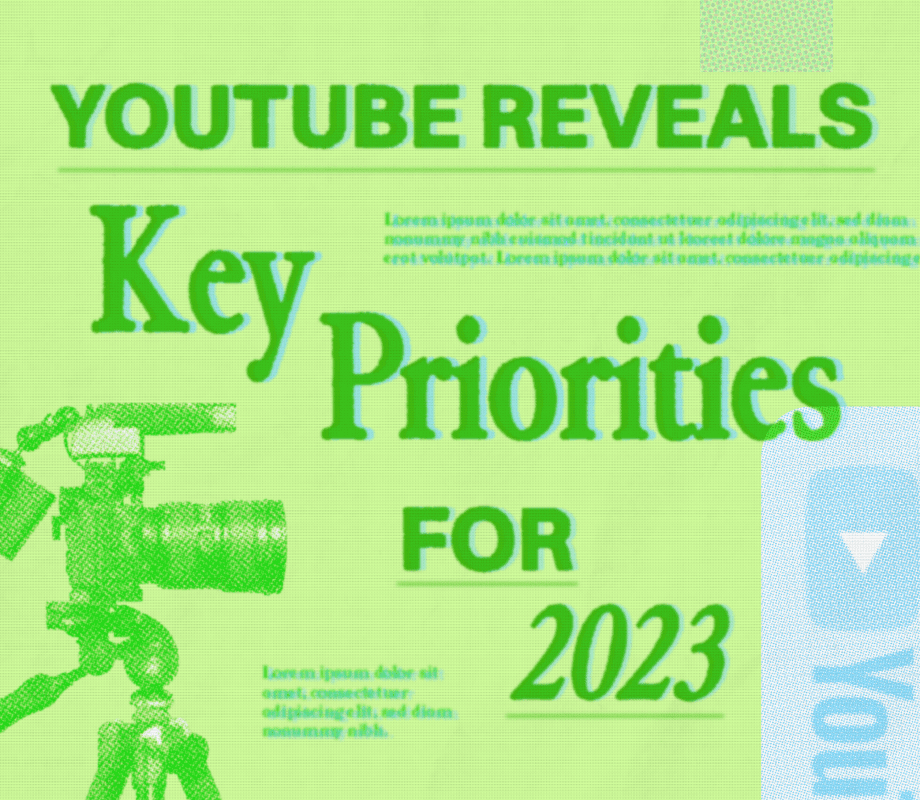Being a strong communicator comes naturally for some, while for others, it’s an opportunity for growth. Some team members dominate conversations, while others might not feel comfortable sharing their ideas.
What you need is a way to create balance and build an environment where everyone can communicate confidently and effectively. That’s where communication goals come in.
Let’s look closer at communication goals, why they should always be SMART, and what these goals might look like in practice. We’ll explore real-life examples of goals and offer advice on how to set and track them in the best way possible.

10 SMART Communication Goals for Teams With Examples
What is a Communication Goal?
A communication goal is a target that your team members can work towards to help them build strong, effective communication skills in the workplace. Many people find it difficult to adapt the way they communicate. Having clear goals makes it easier for them to remove communication barriers so they can improve and grow.
Most communication goals center around helping teams work better together. When team members struggle to communicate their challenges, schedules can suffer. Empowering your team to elevate their communication skills creates a more enjoyable environment for all, where everyone feels respected, listened to, and able to communicate clearly.
Managers might decide to set general communication goals for the whole team or specific targets for each team member. Even if you choose to create strategic goals for individuals, it’s still useful to have some guidelines for the entire team or company.
Use the Communication Plan Template by to build an internal guide to communication. This way, everyone knows what best practices in communication look like!


Benefits of Setting SMART Communication Goals
To make your targets achievable, use the SMART goal approach to define communication goals:
- Specific: What exactly am I trying to achieve?
- Measurable: How can I know I’ve been successful, and how can I know just how successful I was?
- Achievable: Is this goal realistic?
- Relevant: Does this target help me reach my wider business goals?
- Time-bound: Can I set a time frame for achieving this goal?
Let’s take a look at a SMART communication goal example:
A manager realizes that the project team meetings are often dominated by their own voice. They want to increase participation from other team members and set a goal to make this happen.
The new communication goal for the team is two-fold: Balance talk time between members so that it’s more equal and achieve this within the next five meetings. To measure this, they’ll use an app that shows talk time in real-time and provides a score after the meeting.
This achievable goal has a clear objective and is highly relevant—greater team participation is a key element of team communication and knowledge transfer. The manager’s goal recognizes that this change won’t be instant and gives a realistic and specific time frame. They’ve also provided a simple way to measure success by using the app. 🎯
Adopting this SMART approach brings plenty of benefits to overall corporate communication. These include:
- A clearer understanding of the intended goal or purpose
- Achievable time frame in which to achieve the goal
- Insights into the most important element of the goal
- Guidance on how success will be measured
- Context on why this goal is being set and why achieving it matters
As you work through your communication goals, consider how you can make each of them match the SMART philosophy. Clear, specific goals are easier for your team members to understand, action, and achieve. For better communication, making your goals SMART gives your team a higher chance of success.


10 Communication Goal Examples for Your Team
Building a proper communication strategy from scratch can be overwhelming. Luckily, we’ve done the research on the best communication goals to have in the workplace. Here are some common communication goals that managers can introduce for their teams, alongside examples of SMART goals that can help you achieve each one.
1. Be clear and concise
It’s hard to get your message across without communicating accurately. Many people struggle with being concise, adding in filler words, pauses, and unnecessary details. The outcome is that your main message can get lost, and your audience might lose interest along the way. Instead, practice being clear and concise.
Convey your message in as few words as possible, cutting out any details that don’t feel relevant. Apply this to your public speaking skills, your written communication, and your nonverbal communication for the biggest impact.
SMART goal example: Reduce the number of filler words in your team updates by 20% by this time next month. 💬
2. Prioritize the most important message
Whether you’re giving a project update or leading a company-wide meeting, it’s normal to have more than one thing to discuss. Even when you only have one message to share, it’s easy to focus on the wrong element of it and cause confusion. Aim to prioritize the key message and make it stand out.
Reflect on your communication objectives and what it is you’re trying to communicate. Consider your target audience and the best way to deliver the message. Prepare your update, talk, or presentation beforehand and check with a team member to ensure your intended message is clear.
SMART goal example: Restructure your team update so that one key deliverable, success story, or challenge is highlighted in the next all-hands meeting. Any other updates can be shared in the meeting notes. 🎉


3. Use data and research to support your message
Too often, we don’t make the most of the resources or existing knowledge we have. If you have data and metrics available to you, use them. Data can support your arguments, illustrate the value of a project, and demonstrate your success. Not only is this useful for internal business communication, but for talking with external stakeholders, too.
Support your statements, presentations, objectives, and outcomes with the data and insights you hold. Use them to strengthen your position, suggest an alternative route forward, or celebrate how impressive your team’s work was.
SMART goal example: Record customer experience scores so that in the future, you can highlight these when talking about the success of your customer success team. 💚
4. Remove acronyms and highly technical language
In the business world, there’s always another new acronym or phrase. For some of your team members, these might be commonplace and easy for them to understand. For other people, they’re confusing and detract from the message you’re trying to share.
Avoid acronyms and technical language as much as possible to aid with clear communication.
Ask your team members to keep their updates to the wider team as user-friendly as possible. Use technical language for your team standup meetings, but swap to more everyday wording when communicating with a wider audience. If some phrases are necessary and come up often, create a company-wide glossary or guide and make this readily available.
SMART goal example: Reduce the use of highly technical language and adopt a more user-friendly language style for company updates by the next meeting. ⚒️
5. Make your communication more inclusive
In many workplaces, many of the most important company updates happen during live meetings. This presents problems for team members who aren’t able to attend and for those who find verbal updates difficult to follow. Aim to make your communications as inclusive as possible and break down barriers if they exist.
Consider how you can use different types of communication—including written, visual, and verbal communication. Record your important meetings and make these recordings available, and use an AI note-taking tool to provide an instant summary. Consider the language you use, too, and opt for inclusive and nongendered language as a default.
SMART goal example: Make a video recording of every company-wide meeting available within 24 hours, along with a reliable written summary, starting from the next meeting. 💻


6. Communicate with confidence
Whether you’re in a leadership position or not, being able to communicate with confidence is a highly valuable skill. Using your words, pacing, body language, and writing style to convey confidence can inspire your team members to make a strong point, pose a question, or close a deal.
Some people are naturally confident leaders, while others might appreciate guidance on achieving this. Coach your team members on how to make eye contact, how to communicate clearly, and how to field challenging questions from an audience.
SMART goal example: Take a short course on communicating more confidently by the end of the year. 📚
7. Use storytelling for good
Many people overlook the value of storytelling in workplace communication, but it’s just as valid here as it is in the creative world. Adding storytelling to your communication style makes your updates more fun, engaging, and impactful.
Look for ways to use real-life evidence and examples to enhance the message you want to share. Proactively collect customer testimonials, case studies, and imagery that might be useful at some point so you always have a bank of story ideas ready to go.
SMART goal example: Source a real-life story or example to share alongside your next project impact update for the company newsletter. 🌍


8. Keep everyone updated
It’s easy to miss information if you can’t make a meeting or don’t log in to your company intranet that day. Companies with a strong internal communication culture use multiple communication channels to ensure everyone gets the message.
Review the channels and internal communication software apps you currently use and decide whether they work. Recommend alternatives to your communications team, like podcasts, blogs, and a daily update in Slack. Think about how you can get your team’s voices heard through these channels and proactively work with your communications team to raise awareness, share successes, and ask for support.
SMART goal example: Agree on a process with the communications team to include a regular slot about your team in the company newsletter by the end of the year. 📝
9. Become an active participant
Most companies and teams have individuals who are loud and dominate conversations, while others will say as little as possible, even when prompted. Neither communication style is inherently wrong, but you should look for ways to encourage quieter team members to get more involved—if they desire to.
Talk to your team members and understand whether there are any barriers in the way of them speaking up so you can add some training resources or ideas to their personal development plan alongside relevant goals to encourage and motivate them.
Introduce video call software highlighting talk time, create dedicated space on team meeting agendas for every member, and support their preferred communication styles. All these strategies give you a way to empower your team members to become more active players in meetings, events, and client calls.
SMART goal example: Create a new team meeting agenda that features space for every individual to share a work update and a fun or personal update by next month. 🙌


10. Share your wins
Much of a manager’s time is spent juggling priorities and handling issues, so it’s no surprise that we often forget to celebrate our hard work and give valuable feedback. Start highlighting your wins and handing out praise to increase employee engagement and create a positive work environment.
Look for opportunities to shout out about the great work your team is doing at all-hands meetings, in company newsletters, and in company-wide Slack channels. Create space for your team members to share their wins, and include praise wherever possible. Positivity is contagious, and this feel-good atmosphere can encourage team members to participate and communicate more effectively.
SMART goal example: Reserve space at the start or end of every team catch-up to share your wins, and encourage every team member to participate at least once per month. 🤩
How to Meet Your Communication Goals
Goal setting is the first step toward success, but how do you actually monitor your progress?
We’ve found the best way to stay motivated and check off progress on your goals is to use Goals. Our approach not only gives you a user-friendly place to store your goals, but it also allows you to track your progress and celebrate when you hit your deadlines.
Create clear Targets in based on your objectives, then decide how you’ll measure them. Add numerical, monetary, or true/false values to track your progress as you check off tasks and milestones. Pull in tasks and subtasks from various teams and projects to unite them under one Target.
Group all your communication goals together in one Folder so you can see progress both toward individual goals and as a category. Use the progress roll-up to see your goal progress, then dive into detailed individual goal views complete with descriptions. Create personal, professional goals for work, or share them with your wider team or company by changing the permissions.


isn’t just a goal-tracking app; it’s also a place to create and share internal plans and policies, brand guidelines, and training guides. We even have a library of templates that make ideal foundations for you to customize—including project communication plan templates and communication plan templates.
Here are some ways to put our templates to work for you:
If you adopt as your all-in-one productivity and project management hub, it also becomes the ideal place to practice your communication skills. Tag team members, leave comments, add notes, and use Chat to stay in touch with team members on your projects.
From our dedicated Goals feature to our wider collection of templates, task management features, and resource management tools, has everything you need to set, monitor, and achieve your company goals. 📈


Set and Master Your Communication Goals
Nobody communicates perfectly every time, but giving your team clear communication goals sets expectations and gives them a helpful framework to guide them. Use these communication goals and SMART goal examples to build your own personalized objectives.
If you want to commit to mastering your communication goals, make your go-to hub for goal tracking. Goals makes it easy to set, monitor, and celebrate your goal successes—and all within the productivity and project management hub of . Start making progress toward your goals, and sign up for today. ✨


Everything you need to stay organized and get work done.




/cdn.vox-cdn.com/uploads/chorus_asset/file/24222843/226422_K_Radtke_budget_phone_buying_guide.jpg)








